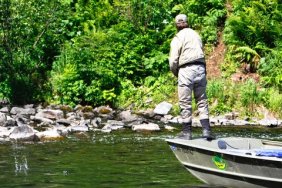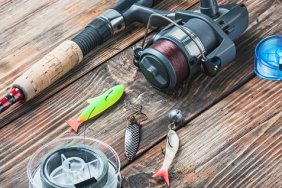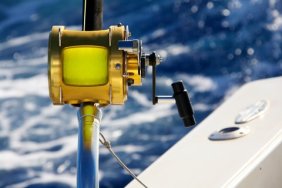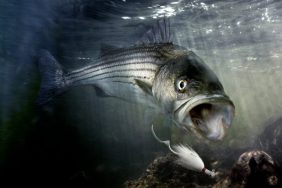 Many of us have been there; that moment when bass are gathering in groups to aggressively feed—even around your boat—and no matter what you throw at them, they won’t bite. It happens. Most anglers in this scenario will rapidly try one lure after another, hoping to discover the perfect one for schools of feeding bass. However, it’s just not that simple. There are a few reasons for this reluctance to strike an obviously enticing lure, though, as well as ways to attract a bite when nothing seems to work, and today we’ll learn more about this.
Many of us have been there; that moment when bass are gathering in groups to aggressively feed—even around your boat—and no matter what you throw at them, they won’t bite. It happens. Most anglers in this scenario will rapidly try one lure after another, hoping to discover the perfect one for schools of feeding bass. However, it’s just not that simple. There are a few reasons for this reluctance to strike an obviously enticing lure, though, as well as ways to attract a bite when nothing seems to work, and today we’ll learn more about this.
First things first: bigger isn’t always better. There are times when bass are picky about the size of the bait they’ll strike, which is small many times. Another size-influencing factor may be the large amount of smaller shad in the waters, due to a recent shad spawn. In the Autumn months, small shad tend to gather in schools in the back of major feeder creeks and pockets, making them a prime, easy target. Finally, fishing pressure can also influence bass to be extremely cautious, even when there are hundreds of shad swimming around. Often times, bass are so heavily fished, that the sudden splash of your lure will send them scattering for cover. All of these reasons comprise a need to think smaller when bass are schooling.
Downsizing your lures to smaller versions of your larger lures allows you to better imitate local bait and give bass what they want. However, this typically means you’ll need to downsize your tackle, as well. With smaller lures, I like a spinning outfit with six-pound test fluoro on a seven-foot, light action rod.
You’ll want to make sure you have small lures that cover three distinct area in the water: top, middle, and bottom. You’ll want to go topwater when bass schools are actively feeding at the surface, middle zone when you see shad schools moving around, and bottom if you want to imitate an injured or dead shad.
I like the Heddon Zara Puppy or a Booyah Pond Magic buzzbait for small topwater lures. When you see bass feeding at the surface, simply cast your topwater lure past the activity and pull it back towards the boat. Now, the middle zone can range anywhere from just below the surface to almost on the bottom, and it primarily the zone where schooling bass will be chasing groups of baitfish or chasing down stray shad. Here, I like an inline spinner, such as a Roostertail. Their subtle, yet enticing action, along with their small profile, do a great job of imitating shad. Down near the bottom, a small spoon can produce some impressive numbers when bass are finicky, and Cotton Cordell’s ¼oz Little Mickey is a great option. It’s the perfect size and catches bass of all sizes.
The lures and tactics outlined today are great for when schooling, feeding bass just don’t seem to be interested in your conventional bass lures. Sure, they may be smaller and you’ll have to downsize your tackle, but the results are well worth it.








